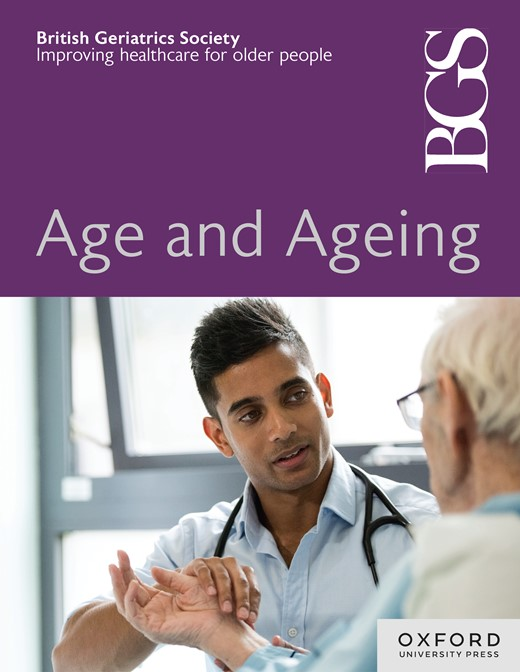Retrospective evaluation of the world falls guidelines-algorithm in older adults
IF 6
2区 医学
Q1 GERIATRICS & GERONTOLOGY
引用次数: 0
Abstract
Background The World Falls Guidelines (WFG) propose an algorithm that classifies patients as low-, intermediate-, and high-risk. We evaluated different operationalizations of the WFG algorithm and compared its predictive performance to other screening tools for falls, namely: the American Geriatrics Society and British Geriatrics Society (AGS/BGS) algorithm, the 3KQ on their own and fall history on its own. Methods We included data from 1509 adults aged ≥65 years from the population-based Longitudinal Aging Study Amsterdam. The outcome was ≥1 fall during 1-year follow-up, which was ascertained using fall calendars. The screening tools’ items were retrospectively operationalized using baseline measures, using proxies where necessary. Results Sensitivity ranged between 30.9–48.0% and specificity ranged between 77.0–88.2%. Operationalizing the algorithm with the 3KQ instead of fall history yielded a higher sensitivity but lower specificity, whereas operationalization with the Clinical Frailty Scale (CFS) classification tree instead of Fried’s frailty criteria did not affect predictive performance. Compared to the WFG algorithm, the AGS/BGS algorithm and fall history on its own yielded similar predictive performance, whereas the 3KQ on their own yielded a higher sensitivity but lower specificity. Conclusion The WFG algorithm can identify patients at risk of a fall, especially when the 3KQ are included in its operationalization. The CFS and Fried’s frailty criteria may be used interchangeably in the algorithm’s operationalization. The algorithm performed similarly compared to other screening tools, except for the 3KQ on their own, which have higher sensitivity but lower specificity and lack clinical recommendations per risk category.对世界老年人跌倒指南算法的回顾性评估
背景 《世界跌倒指南》(WFG)提出了一种将患者分为低危、中危和高危的算法。我们评估了 WFG 算法的不同操作方法,并将其预测性能与其他跌倒筛查工具进行了比较,这些工具包括:美国老年医学会和英国老年医学会(AGS/BGS)算法、3KQ 本身以及跌倒史本身。方法 我们纳入了阿姆斯特丹人口纵向老龄化研究中 1509 名年龄≥65 岁的成年人的数据。结果是在 1 年的随访中跌倒次数≥1 次,并通过跌倒日历进行确认。筛查工具的项目通过基线测量进行回顾性操作,必要时使用替代物。结果 灵敏度在 30.9-48.0% 之间,特异度在 77.0-88.2% 之间。用 3KQ 代替跌倒史来操作该算法,灵敏度较高,但特异性较低;而用临床虚弱量表(CFS)分类树代替弗里德的虚弱标准来操作该算法,并不会影响预测效果。与 WFG 算法相比,AGS/BGS 算法和跌倒史本身的预测效果相似,而 3KQ 本身的灵敏度较高,但特异性较低。结论 WFG 算法可以识别有跌倒风险的患者,尤其是在将 3KQ 纳入其操作中时。在算法的操作中,CFS 和 Fried 的虚弱标准可以互换使用。与其他筛查工具相比,除了 3KQ 本身的灵敏度较高但特异性较低,而且缺乏对每个风险类别的临床建议外,该算法的表现类似。
本文章由计算机程序翻译,如有差异,请以英文原文为准。
求助全文
约1分钟内获得全文
求助全文
来源期刊

Age and ageing
医学-老年医学
CiteScore
9.20
自引率
6.00%
发文量
796
审稿时长
4-8 weeks
期刊介绍:
Age and Ageing is an international journal publishing refereed original articles and commissioned reviews on geriatric medicine and gerontology. Its range includes research on ageing and clinical, epidemiological, and psychological aspects of later life.
 求助内容:
求助内容: 应助结果提醒方式:
应助结果提醒方式:


